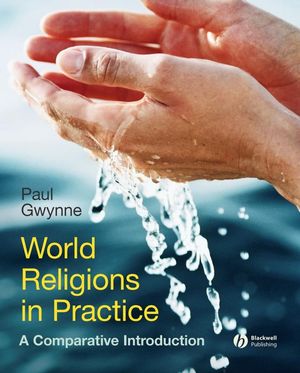World Religions in Practice: A Comparative IntroductionISBN: 978-1-4051-6702-4
Hardcover
448 pages
August 2008, Wiley-Blackwell
 This is a Print-on-Demand title. It will be printed specifically to fill your order. Please allow an additional 15-20 days delivery time. The book is not returnable.
|
||||||
"This is an impressive accomplishment that presents a
moving and engaging encounter with the religious traditions of the
world." Kim Paffenroth, Iona College, USA
"A very efficient, dynamic and useful tool in an approach
to the five major religions of the world." Alexandria Egler, St
Francis College, USA
“In an age when religion is increasingly in the news, but
often for all the wrong reasons, the need for a balanced,
sympathetic and objective educational tool has never been greater.
Paul Gwynne has provided an accessible introduction to religion.
His approach is refreshingly obvious: it is through the
understanding of what people are doing that we discover what they
are thinking. Practices reveal belief; religions are as religions
do.” Douglas Pratt, University of Waikato, New
Zealand
"A thoughtful and accessible approach to the religions from a
phenomenological point of view. The book promotes the desirable end
of understanding and sympathy between religious practitioners, and
is an attractive choice as an introductory textbook." George
Sumner, University of Toronto
“A carefully crafted and comparative approach to major
religions, often serving to separate human populations, as
templates of how humankind in so many varied places has had such
similar needs, desires and hope. Gwynne's book represents a very
creative turn in this field.” Dr Majorie M Snipes,
University of West Georgia
“This book treats the great traditions with a vividness and immediacy which have seldom if ever been equalled. Instead of placing the main emphasis on doctrines, beliefs and their claims to truth, Paul Gwynne selects those aspects of life where religions become practical and guides us an appreciation of each which is aesthetically pleasing as well as providing useful information. Surely one of the best ways to come to know a faith tradition different from one’s own is to live among its adherents. Reading this book is the next best thing. It should prove invaluable for educators and students as well as interested laypeople in a variety of professions.” John D’Arcy May, Irish School of Ecumenics, Trinity College Dublin



